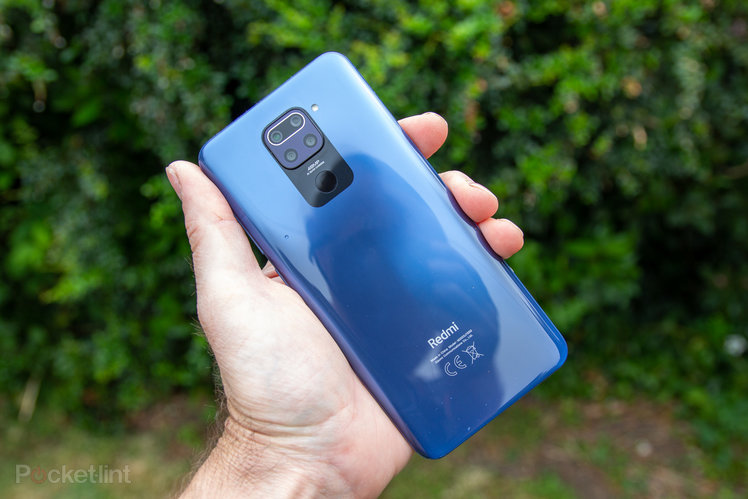
Redmi is the affordable arm of smartphone giant Xiaomi. We say affordable, but Xiaomi is already an affordable brand compared to some stalwarts like Apple or Samsung, meaning that Redmi is known for offering very good value for money.
The Note family is one of the most popular that Redmi offers. We’ve no idea why it’s called the Note, it’s nothing like the Note that Samsung offers, it’s just a great phone that offers great value for money.
We’re in the process of reviewing the Redmi Note 9, here are our first impressions – and they certainly are good.
Premium design
- 162.3 x 77.2 x 8.9mm, 199g
- Punch hole display
- 3.5mm headphone socket
Look at the Redmi Note 9 and it’s hard to spot that this isn’t a flagship device. The colourful and glossy exterior brings with it a quality design, but in this case the rear plastic bodywork wraps around the edges to meet the display.
There’s a seamless quality to it, but this is a big phone, something that’s predicated by the 6.5-inch display. At the same time, Redmi has been careful not keep the bezels to a minimum, the front camera sitting in a neat punch hole to the top left and things are generally very tidy.
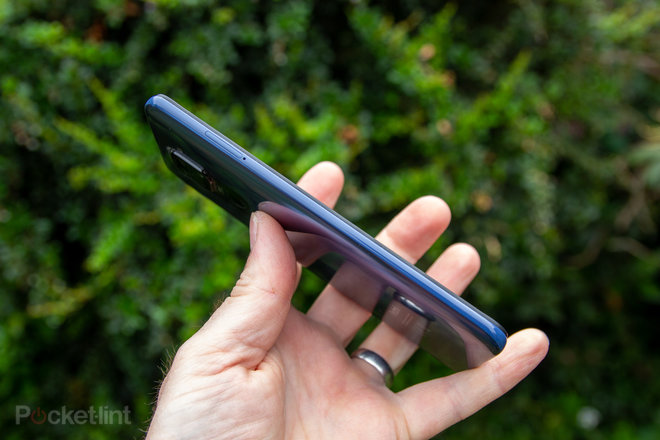
There’s no waterproofing at this level of device but that’s to be expected and there’s only a single speaker on the bottom – again, common on devices in this bracket. It’s accompanied by a 3.5mm headphone socket so you can, at least, connect your headphones for a better audio experience.
What dominates the rear of the phone is the camera housing. Four lenses sit in a central cluster, slightly raised, and beneath is the fingerprint scanner. While many may have moved to offer under display scanners, there’s no avoiding that rear scanners work reliably, even if they make for a slightly less sophisticated design.

The Note 9 is a little on the thick side and it’s a little weighty, but some of that is explained away by the big battery it has inside.
Specs and core hardware
- MediaTek Helio G85, 3/4GB RAM
- 64/128GB + microSD (up to 512GB)
- 5020mAh battery, 18W fast charging
While flagship phones have a very similar hardware loadout, there’s a lot more variance lower down the range. The Redmi Note 9 moves over to MediaTek for its hardware, but things aren’t quite that simple, as the Redmi Note 9S and Note 9 Pro have Qualcomm hardware instead – so you can see how Redmi is using different manufacturers to leverage its pricing.
For this regular Note 9, the MediaTek Helio G85 sits at its heart and that’s broadly equivalent to Qualcomm Snapdragon 700 series (which the 9S and 9 Pro both offer). The important thing here, however, is that this is a step above most other phones at this price, which might have a Helio P22 or Snapdragon 600.
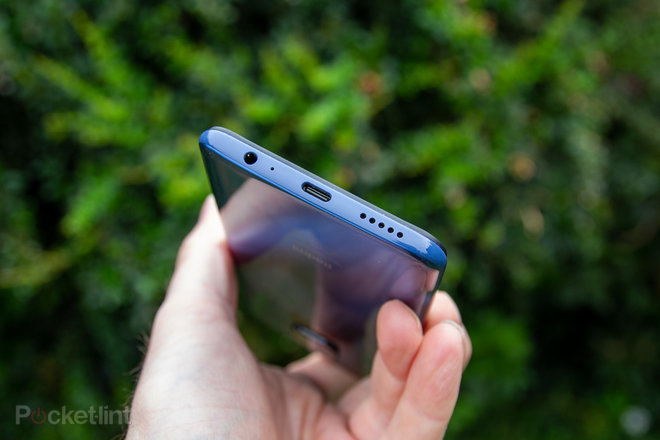
That sets the Redmi Note 9 off to a great advantage, because it’s naturally more powerful. Moving into the Note 9 from the Sony Xperia L4 – which is only £10 cheaper – there’s a world of different in performance, based on our first impressions over 24 hours of use.
For example, first up Call of Duty Mobile or PUBG Mobile and you have a decent experience, you’re not running on the lowest settings, so you get all the textures you expect, rather than having some missing (like grass in CoDM).
There are two different versions of the Note 9 to choose, the most affordable has 3GB RAM and 64GB storage, the model we’re testing has 4GB RAM and 128GB for a modest price bump. But both support microSD so can be easily expanded – both also support dual SIM, although there’s no 5G.
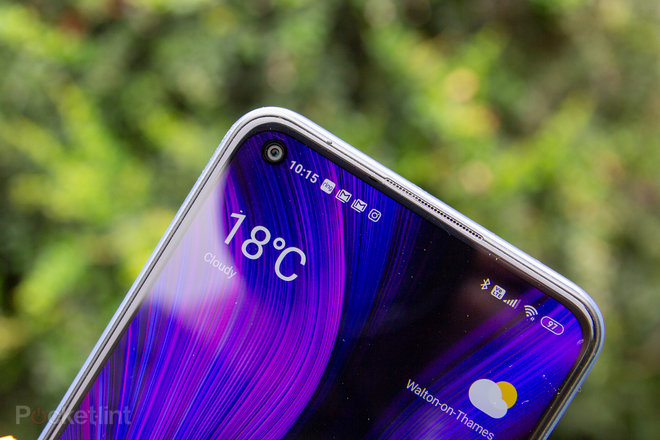
Then we come to the battery. There’s a huge 5020mAh cell in the Redmi Note 9 – which accounts for some of the size and weight. We’ve not had the chance to test the endurance of this phone, but the capacity suggests it’s going to last a long time. There’s also 18W fast charging with a 22.5W charger in the box – again, it’s great to have these fast charging features on an affordable phone.
Sure, the Redmi Note 9 isn’t going to stand up against flagship phones, but from what we’ve seen so far, the performance is more than good enough for more uses.
Display
- 6.53-inch LCD display
- 2340 x 1080 pixels, 394ppi
The most important thing about the Note 9 display is the size and the resolution, because it brings with it full HD+ detail where many rivals will only be 720p. That pushes the pixel density up – yes, this display is sharper than the iPhone SE and from what we’ve seen on it so far, content looks great.
First impressions, however, suggest that the autobrightness isn’t as responsive as we’d perhaps want it to be and we’ve spent the last 24 hours adjusting the display brightness to suit the conditions. The peak brightness is 450 nits and that might mean that it’s not great at cutting through the glare in bright conditions, but we’ll be sure to test it.
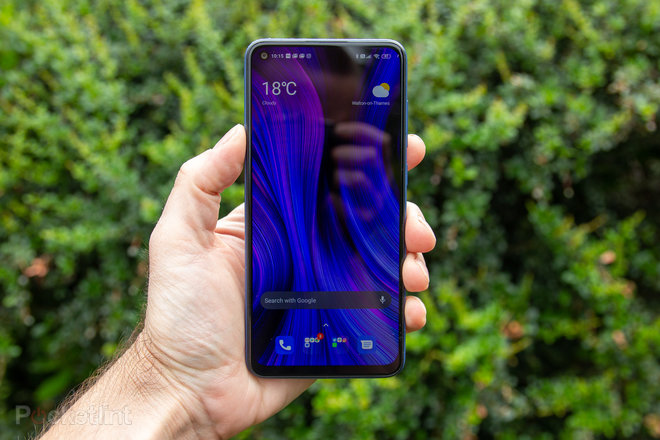
One thing we have noticed is that the polarising layer is on the landscape plane, meaning that if you wear polarising glasses it will black out completely when viewed in landscape, which is an inconvenience when using the camera.
Otherwise this seem like a vibrant and competent display and we like the placement of the punch hole in the top corner as it’s neatly out of the way when gaming in landscape. Things seem pretty good so far, but we’ll update when we’ve spent some more time with his handset.
Quad cameras
- 48MP, f/1.79 main
- 8MP, f/2.2 ultra-wide
- 2MP macro
- 2MP depth sensor
- 13MP, f/2.25 front camera
The Redmi Note 9’s headline camera feature is the 48-megapixel sensor. We’ve seen a number of high resolution sensors being used in lower-priced phones recently and we have mixed feelings about them. More megapixels does not equate to better images and so we’re cautious about forming any judgement about this camera until we’ve had the chance to full test it.
The main sensor means you have small 0.8µm pixels, combining to make a 1.6µm pixel – the argument being that it can then give you more light, while hanging onto resolution that can be used for detail or zooming if you want that.
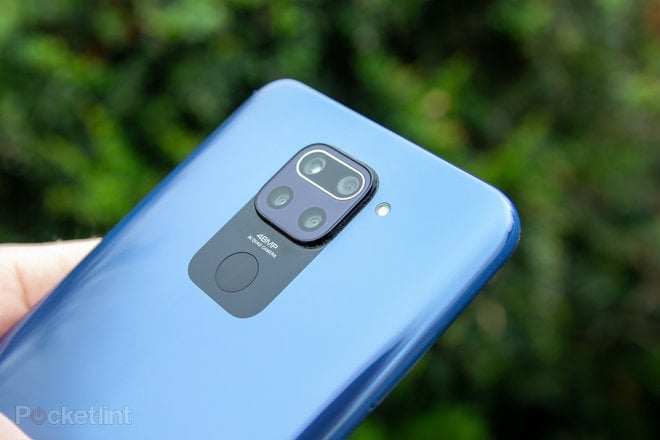
There’s no optical zoom option, although the viewfinder will let you click through to 2x zoom, or out to 0.6x zoom which is the wide angle.
This is Redmi’s AI supported camera, where there’s some roll down of technology from Xiaomi’s phones. We’ve always found that system to be pretty good so we’ll be sure to fully test and update with the results here.
There’s also a depth sensor and macro camera to make up the numbers and it’s interesting that the macro option doesn’t even make it onto the main mode options in the camera app, it’s in a separate menu, suggesting that it’s rather secondary.
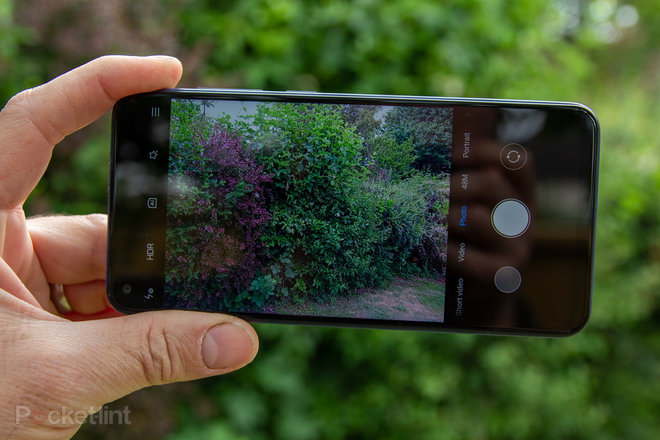
The depth sensor will attempt to enable the bokeh mode and generally we’ve found that these don’t offer results worth getting excited about. Bokeh or background blur on phones can be great, but most of the best examples – the Pixel 3a – comes from a single lens. So there’s an element of boosting the spec sheet here, adding lenses to shout about a quad camera when in reality it’s the main and ultra-wide cameras that will get most of the attention.
Software
- Android 10 with MIUI 11
The Redmi Note 9 comes with the latest version of Android, layered with Xiaomi’s latest software – MIUI 11. That applies a lot of customisation and management in a lot of areas.
MIUI has come on leaps and bounds in the past few years, but it brings with it a lot of changes from the sort of stock experience you might get with something like a Nokia phone running Android One.
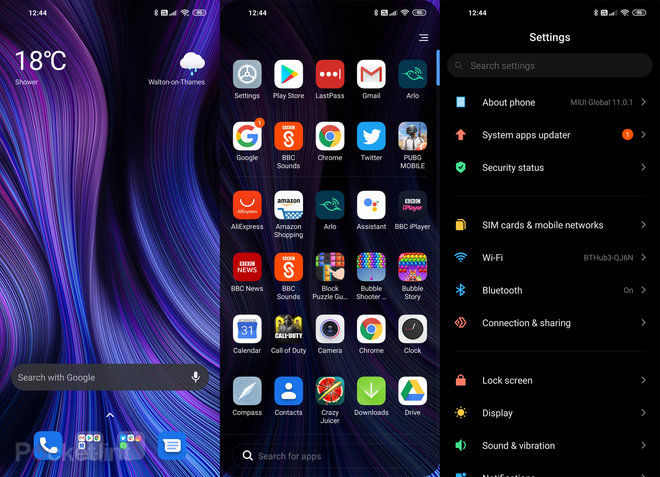
That means you have to deal with a lot of preinstalled junk that you can’t get rid of, like some really tedious games and apps that duplicate a lot of the services that Google already provides. That’s a hangover from serving parts of the world where Google services aren’t provided, i.e., China. That means there’s three browsers, two galleries, additional video, music and office apps, many of which you’ll probably never bother using.
Aside from those things, it doesn’t take long to wrestle MIUI into some sort of shape. It’s a little intrusive by default, but there are plenty of selections you can make to get it singing sweetly and start behaving like an Android phone again.
We’ve not used the phone for long enough to fully evaluate the performance, but after 24 hours, we get the feeling that things are pretty smooth overall.
